Utility Clothing
Nothing quite screams 1940s fashion like a CC41 garment!
During the Second World War, almost all daily necessities including food, makeup, clothing, and furniture were heavily rationed to help free fabric for military manufacturing. In the first two years of the war, there was an increasing demand for fabric in military factories which led to countrywide fabric shortages, ultimately dealing a huge blow to the country's fashion industry.
The fabric shortages quickly brought about a series of changes in the industry, with one of the most noticeable changes in fashion for both men and women was wearing uniforms. Around a quarter of the British population was entitled to wear a uniform in some capacity as part of the Armed Forces, Women’s Auxiliary Forces, or one of the numerous voluntary services such as the Air Raid Precautions. The demand for uniforms was through the roof which put enormous pressure on the textiles industries.
British Vogue, October 1940. Photograph by Cecil Beaton
This also meant that prices of civilian clothing rocketed 75% compared to pre-war pricing, unfortunately meaning many across the country simply couldn’t afford any new clothing - not even a pair of socks.
In an attempt to remedy the shortages and inflation, the British government introduced rationing for clothing in 1941. Similar to how food was rationed, the goal of clothing rationing was to help distribute limited supplies further across the population in a fair and equal way. This scheme gave each item of clothing its own coupon value which varied according to how much material and labour went into making the garment.
The initial points system consisted of:
- 11 coupons for a dress
- 2 coupons for a pair of stockings
- 8 for a men’s shirt or pair of trousers
- 5 coupons for women’s shoes
- 7 coupons for men’s shoes
Each household in the country would be given a coupon book which initially had 66 coupons per adult - a number which steadily decreased as the war progressed. On average, this would mean that a lady would be able to afford one new outfit with accessories per year. This applied to everyone in the country, from the working class to the King and Queen.

A rationing book containing coupons for clothing
Years passed and the war still raged on, it came to a point where clothing rationing simply wasn’t enough to regulate the country's fabric crisis. The conception and creation of ‘Utility Clothing’ would become one of the most prominent and enduring features of the collective memory of the British home front, and forever changed the fashion industry in Britain forever.
To understand the Utility clothing scheme and why it was created, it’s also important to understand what was happening in other fashion industries around the world at the time and how these industries were affecting Britain.

Model Elizabeth Cowell photographed by Lee Miller wearing a Digby Morton suit in London, 1941 CREDIT: ©Lee Miller Archive, England 2020
Battling for Leader of World Couture Fashion
Throughout the war, despite rationing and restrictions, the British fashion industry was important for the war economy as well as for home front morale. From an economic standpoint, Britain couture fashion managed to become popular around the globe, particularly in the US and South Africa. By exporting couture clothing the country was able to raise money desperately needed for armaments and loan repayments, ultimately helping the country stay afloat financially through the war.
The British Government took this opportunity of exporting and pushed for the country to be a world leader in couture fashion after the title had slipped from Paris after the German occupation of France in June 1940. During the occupation, many French fashion houses closed down and designers fled the country to come to London, including the brilliant Irish-born Edward Molyneaux. The closure of these French fashion houses meant that countries like the United States now looked to British couture fashion as a new fashion capital.
EdwardMolyneux - 1922. (Credit: int.balmain.com)
The British fashion industry would become so important to the country and the war economy that in 1942 the Incorporated Society of London Fashion Designers (also known asIncSoc) was established to fly the flag for British fashion and work with the government to help with the ongoing fabric shortages. The IncSoc included iconic designers of the time including Edward Molyneaux, Norman Hartnell, Hardy Amies, Digby Morton, and Victor Stiebel. The purpose of the IncSoc was to bring together the top designers in London and work alongside the government and the fashion press to create an image of prestige around British clothing at both home and abroad. One of the most notable works of the IncSoc is the creation of Utility Clothing.
Utility Clothing Scheme
As clothing rationing gripped the country, the Board of Trade was considering options for reducing the creation of civilian clothing to focus on war manufacturing. At the highest levels of the government, ministers discussed the possibility of nationalising the British clothing industry and creating a standardised battledress for all civilians. Unsurprisingly, this was quickly dismissed as the negative effect this could have on public morale could be devastating. The Board of Trade instead came up with the Utility Clothing Scheme to create regulated, but stylish garments for the public.
Implemented in 1941, the Utility clothing scheme was a state-regulated scheme for the production, pricing, and rationing of clothes using the coupon system mentioned earlier. At first, only half of the clothing produced in the country came under the scheme but by the end of the war, an astonishing 90% was included in the scheme.
In February 1942, the Board of Trade instructed at all Utility garments were to be marked using the CC41 label, which may have stood for Controlled Commodity 1941 or Civilian Clothing 1941. The CC41 logo was designed by Reginald Shipp, with many commenting that the logo resembled two wheels of cheese.
CC41 Utility Labels (Credit: archive.marksandspencer.com)
The Board of Trade commissioned the IncSoc to create a set of basic garments which would form the groundwork for the Utility scheme. The designers were asked to make a suit, coat, and dress which complied with Utility specifications and conformed to austerity rules regarding fabric. The garments were to hopefully be desirable, but not so popular as to gain too much demand.
Designers were limited with their materials and had restricted yardage to use per garment to limit production costs. They were allowed 1.8 metres of fabric for a dress, 2.3 metres for a suit, and 2.5 metres for an overcoat. Dresses were only allowed to have 2 pockets and 5 buttons, skirts were only allowed 6 seams with only two inverted or box pleats or four knife pleats and no more than four yards of stitching in total. Any decorative features such as embroidery, ornamental stitching, turn-back cuffs, turn-ups, double-breasted jackets & coats, and standard pleats were not allowed under the scheme as they either used too much material or took too long to make.
Norman Hartnell comparing original sketch and fabric sample to the finished garment worn by a model.
The Board of Trade even gave out incentives to manufacturers to make Utility clothing to ensure that the garments would be made to the regulations set out by the scheme. These manufacturers would receive a higher quota of material, with the Ministry of Labour also promising that no further workers would be withdrawn from the factory where Utility clothing totalled at least 75% of the output.
Although Utility clothing was more affordable for many, the public's initial reaction was not overly positive. The name itself had been used in the clothing industry before to describe heavy-duty garments designed to survive tough use which really didn’t give off fashionable and flattering associations. It would certainly take some effort from the government and IncSoc to help alter this initial perception.
To introduce and promote the scheme to the public, the IncSoc Utility collections were shown off through several fashion shows which featured heavily in the fashion press, including British Vogue. At one of the shows, a pair of models wearing nearly identical garments were shown to the audience (one Utility and one not) and asked the audience to guess which was which. The shows were successful with the press at the time, with many journalists commenting on how it was a positive change to see haute couture designers making fashion for the wider public instead of the privileged few.
British Vogue commented:
“All women have the equal chance to buy beautifully designed clothes suitable to their lives and incomes. It is a revolutionary scheme and a heartening thought”
The fact that the IncSoc designers were part of the scheme also helped boost public perception of Utility clothing. Women felt more trusting towards their work and were more willing to give these new garments a chance to become their wartime wardrobe staples. Even actress Deborah Kerr was photographed wearing Utility clothing in an edition ofPicture Post to enhance the perception of Utility dress as fashionable.
Deborah Kerr promoting Utility Clothing (Credit: sewingmachinations.com)
“Clumsy and heavy” - Criticisms of Utility Clothing
As mentioned earlier, the name “Utility” made ladies think of bland and unflattering garments, and also gave off the feeling of standardisation where everyone would have to wear the same garments. There was definitely some apprehension that the government would be forcing the public into wearing uniform-style clothing for the whole duration of the war. Even after more CC41 garments were produced which showed a variety of styles and patterns, some just couldn't move from the negative connotations that came along with the word “Utility”.
Ladies who were interviewed at the time were worried that the scheme's clothing could be “clumsy and heavy”, and that the colours would be “dark and disinteresting”. An article inTailored and Cutteragreed with the idea that the word “Utility” gave misleadingly negative first impressions of the scheme:
“There is no glamour about Utility in clothes… certainly the word would not appeal to women”
Of course, we can see now that this definitely wasn’t the case, but it’s completely understandable where these concerns were coming from.
The manufacturers themselves also had some reservations about the scheme. For example, each manufacturer who made CC41 garments could not produce more than 50 different designs of dresses per year. Restrictions allowed them to switch out these designs once a year, but for an industry that was accustomed to two or three annual fashion seasons, this was a massive blow.
Despite this, there was a silver lining that designers took advantage of! There were some very clear gaps in the market for certain products that have never been seen or needed before, and retailers were quick to fill these gaps. Fluorescent buttons could be sewn into garments to keep you safe during blackouts, siren suits to wear over your clothes when heading into air raid shelters (popularised by Winston Churchill who was shown in the media sporting his own suit), and even a hybrid handbag-gasmask was created as a more stylish alternative to a cardboard box.
The ‘Make Do and Mend’ movement also helped push the popularity of Utility clothing as people were encouraged to make their own alterations and personalisation's to the garments.

Although CC41 labels are more commonly known, another label called the ‘double elevens’ or ‘dinner plate’ label was also used from around 1945 onwards. This label was thought to represent better quality, more expensive and slightly more elaborate Utility garments whilst still complying with certain restrictions. This was the first step back towards normality for the clothing industry after the war.

Double Elevens/Dinner Plate label
The Utility scheme didn’t end until 1952, but the fashion industry remained forever changed. In 1947, Christian Dior released hisNew Lookdesigns which revolutionised women’s post-war fashion. The collection had taken inspiration from the Edwardian and 1930s eras featuring rounded shoulders, cinched waists, and full skirts. The designs were also made to be reminiscent of the fabric-conserving shapes of World War II styles, and offer a new outlook on the future of fashion post-war.
With collections such as theNew Lookbeing created, the global fashion industry moved from bespoke and tailored garments to large-scale ready-to-wear operations which would see garments made in bulk quantities never seen before. This paved the way for the faster fashion environment we have today where the beauty in unique garments seems to have fallen by the wayside.
Want some more information on Utility Clothing and wartime fashion? The below sources may be a great start!
- Wearing Propaganda 1931 - 1945 by Jacqueline Atkins
- Guide to Utility Wears Winning Stylehttps://antique-collecting.co.uk/2016/07/19/guide-to-utility-wares-winning-style/
- Imperial War Museum, How Clothes Rationing Affected Fashion in The Second World Warhttps://www.iwm.org.uk/history/how-clothes-rationing-affected-fashion-in-the-second-world-war
- Wartime Wardrobeshttps://www.english-heritage.org.uk/visit/inspire-me/wartime-wardrobes-1940s-fashion-rationing/
- British Vogue Fashion in Time of Crisis https://www.vogue.co.uk/fashion/article/wartime-fashion-lessons
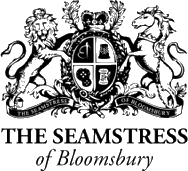
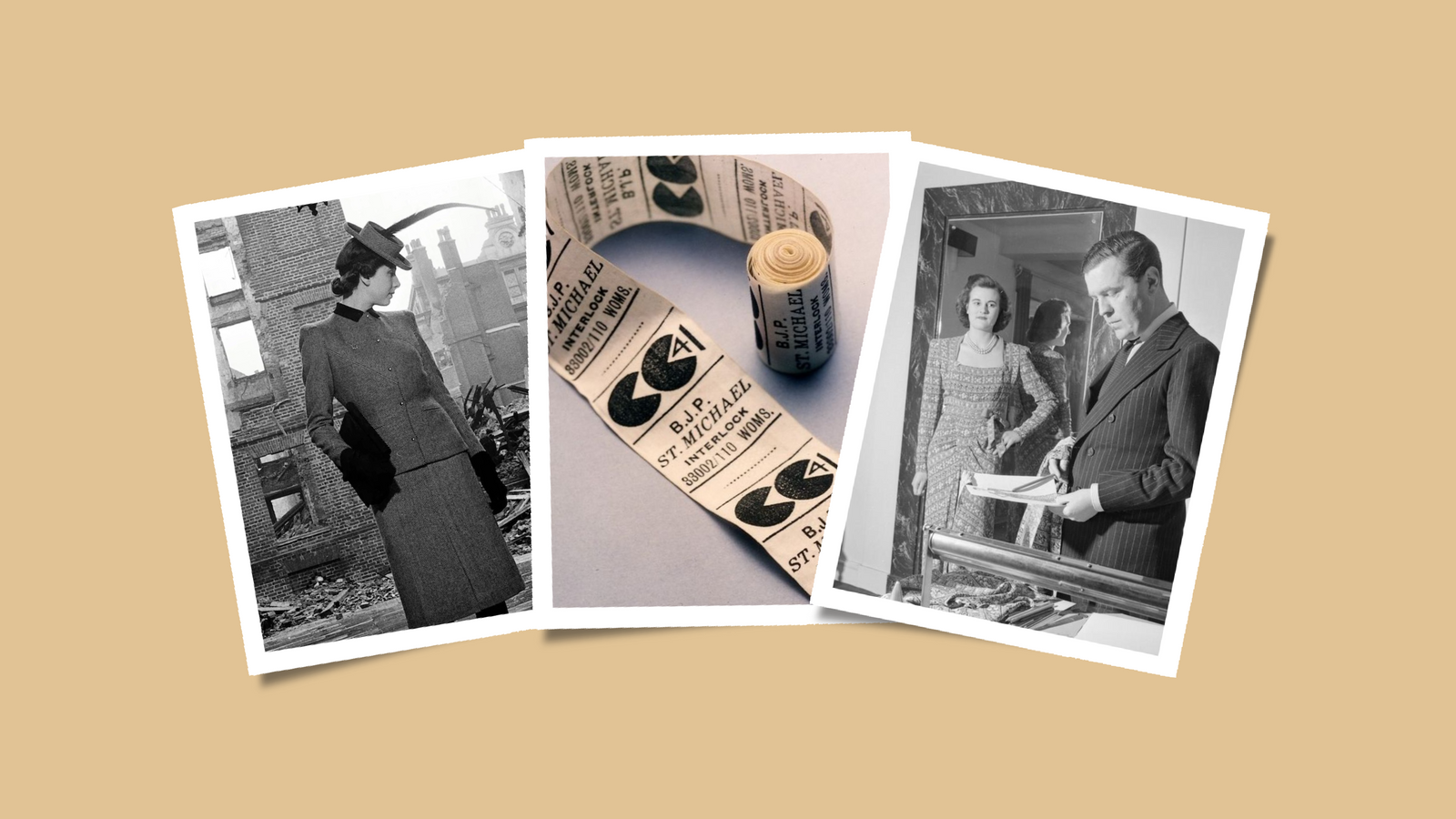





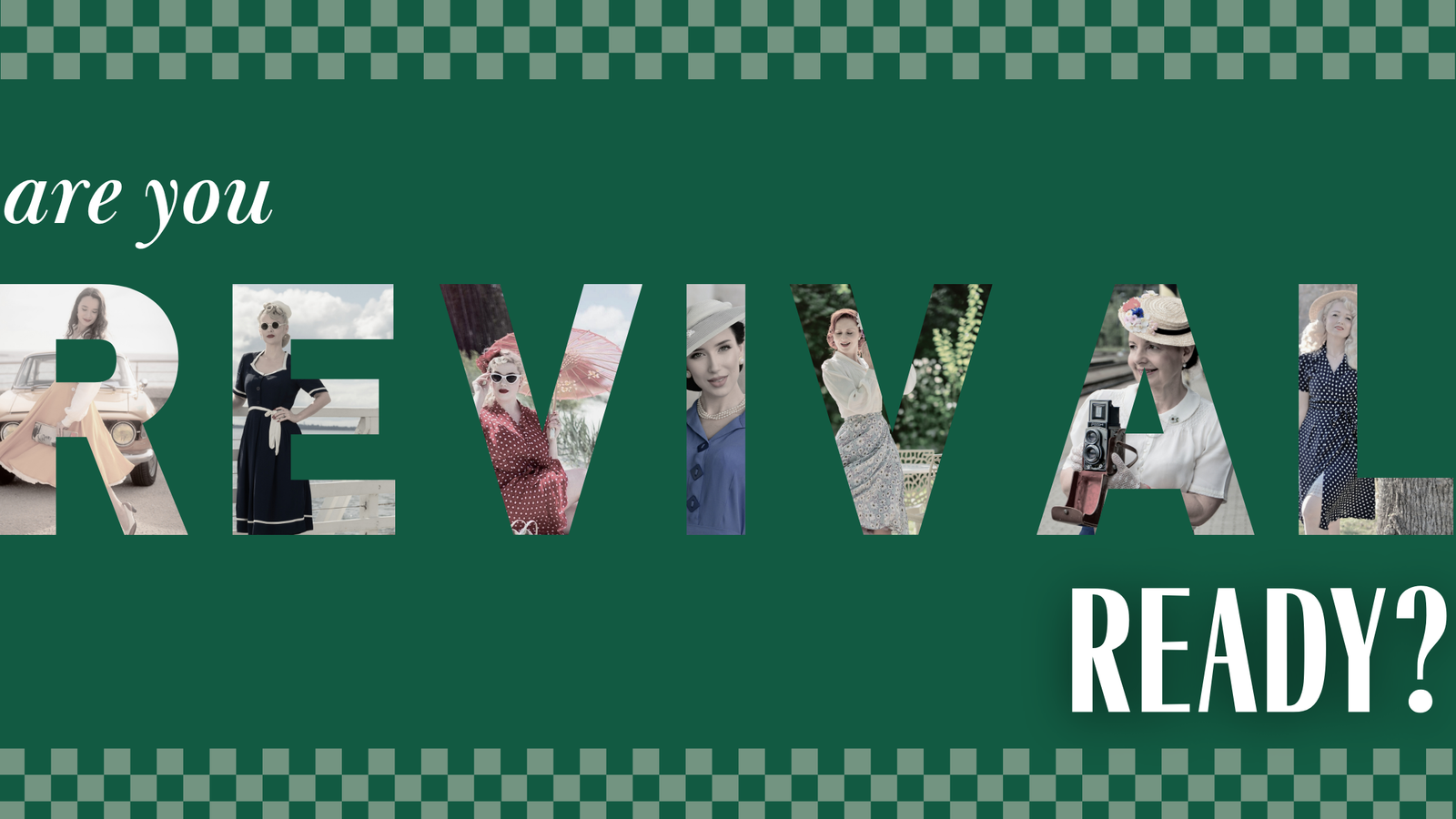
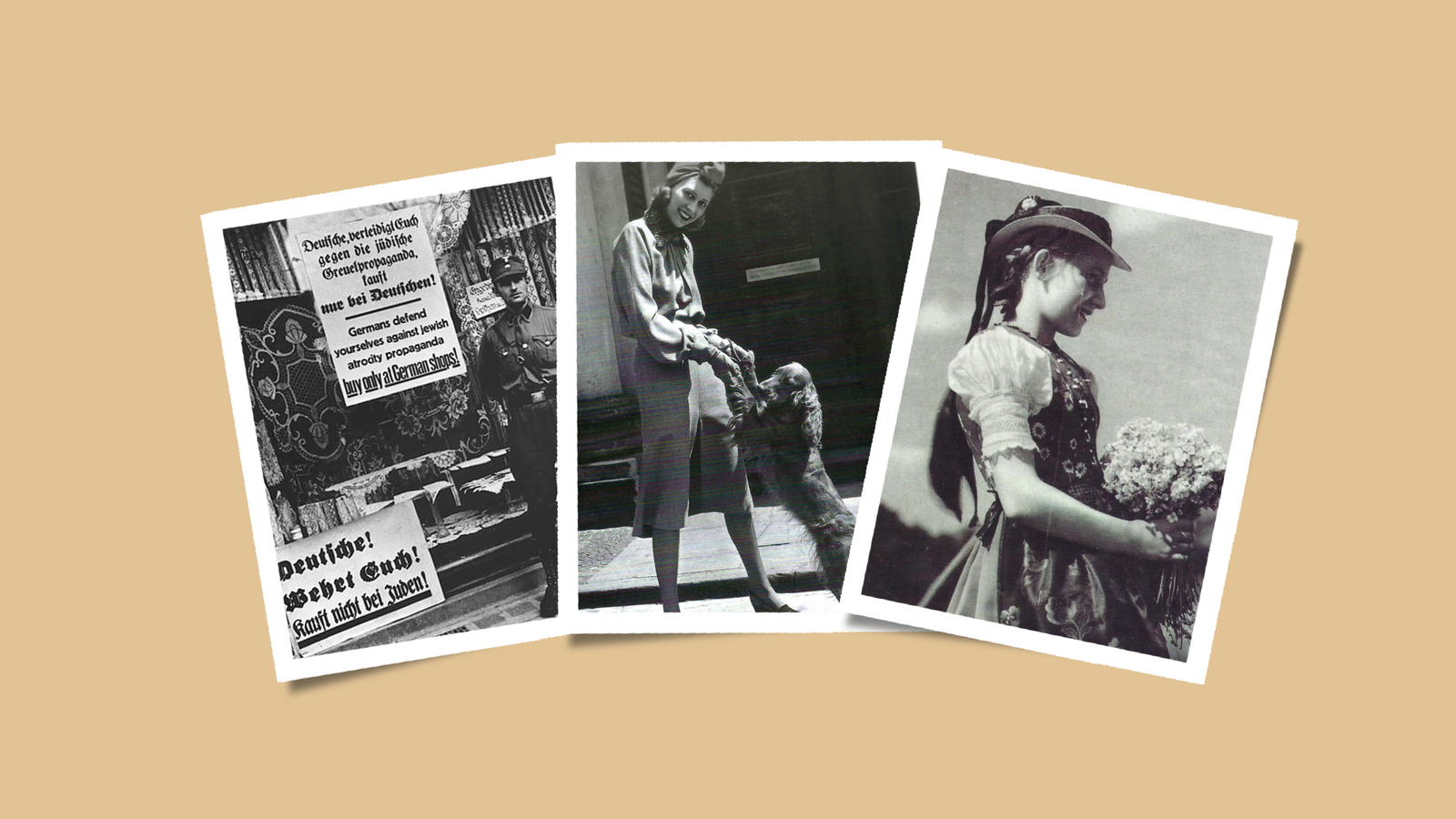
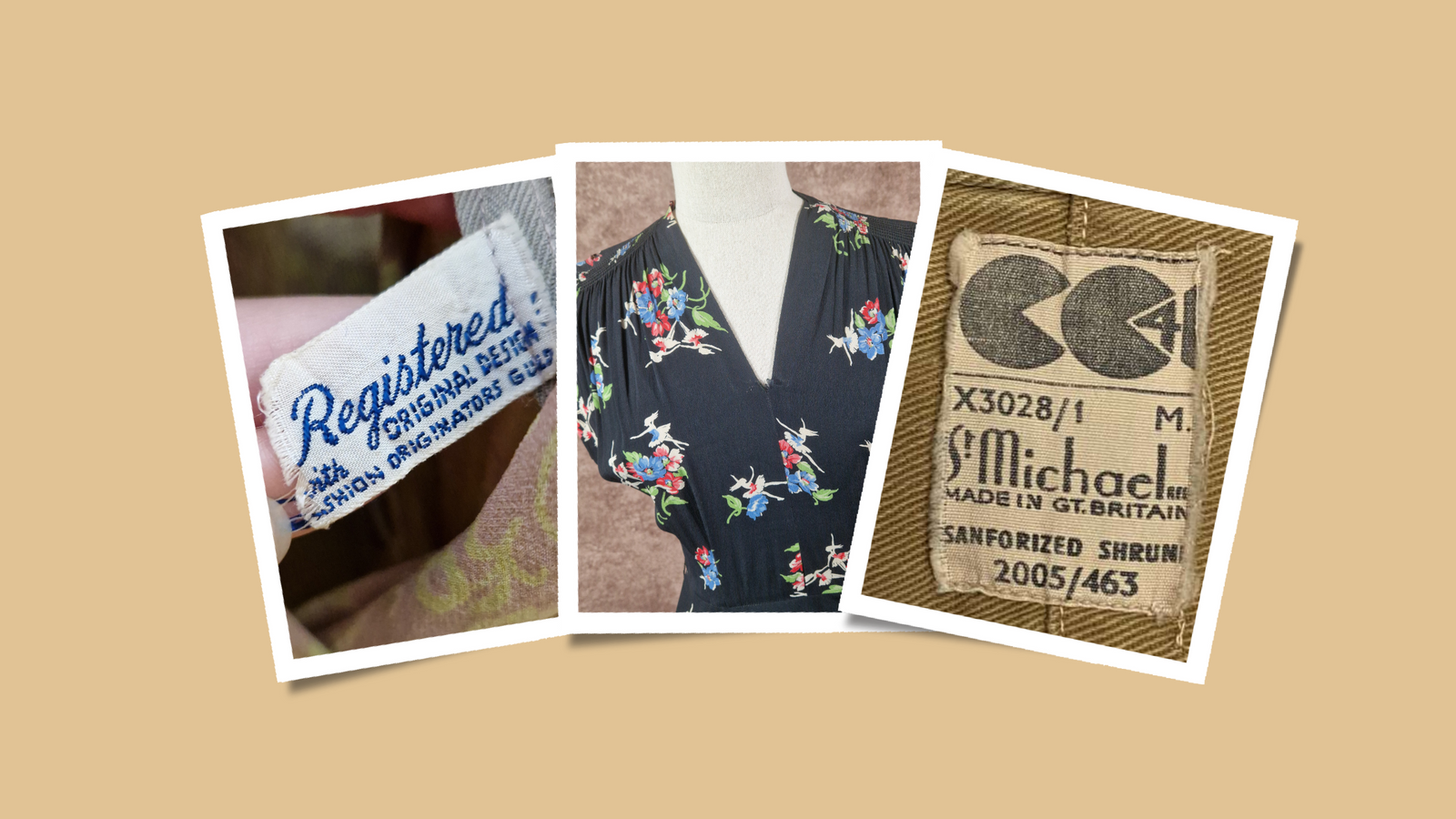
Ruby Walker
September 26, 2025
I found very insightful as a fashion student, I originally discovered the wartime jacket on the v&a archive collection. I am facinate by the history and the adaptation to the jacket. I LOVEEEE IT